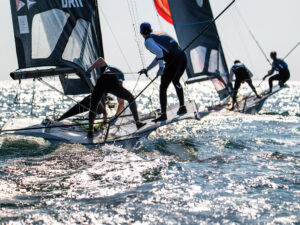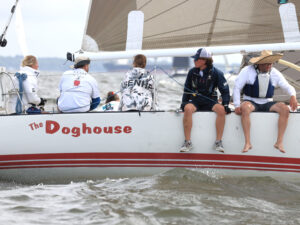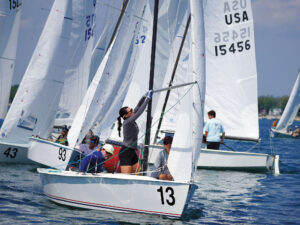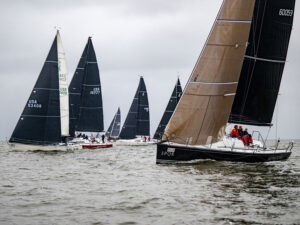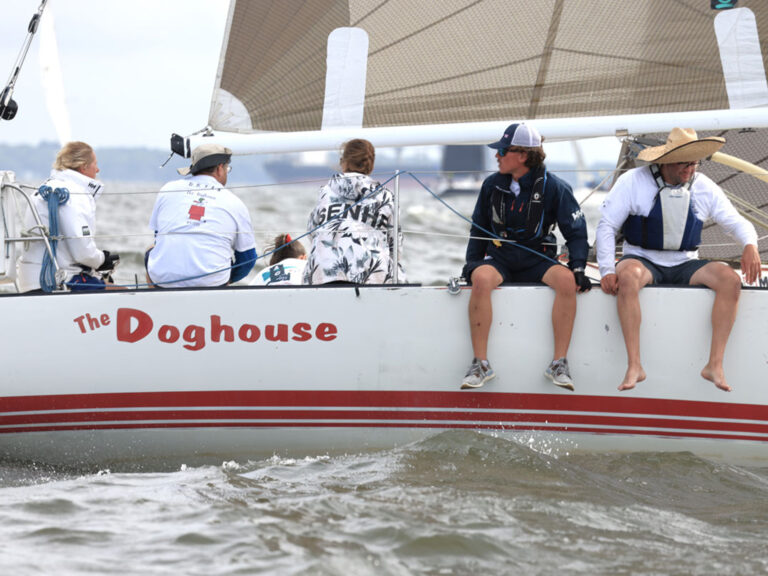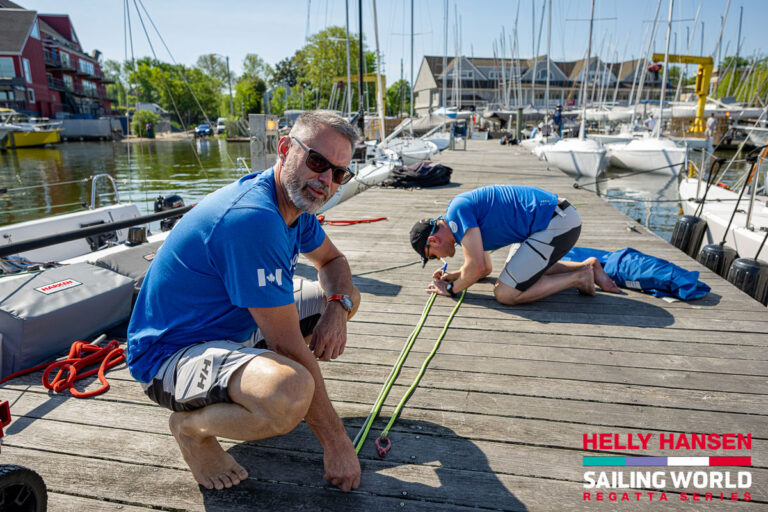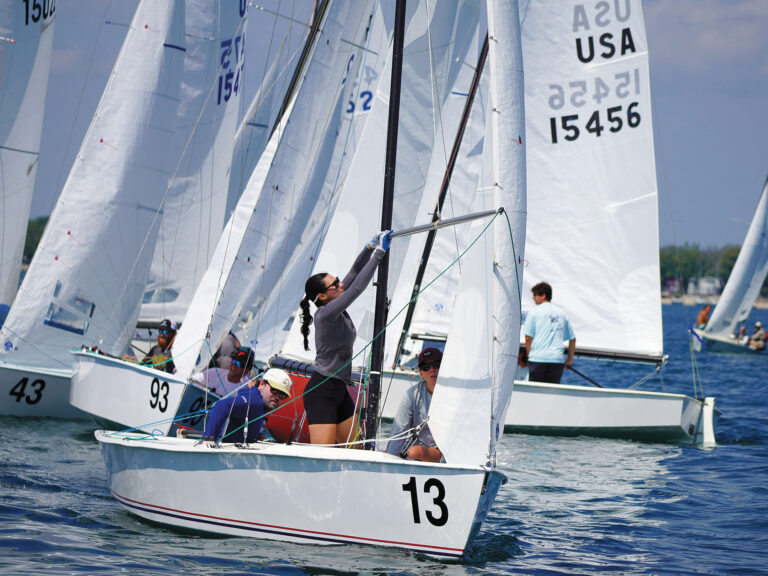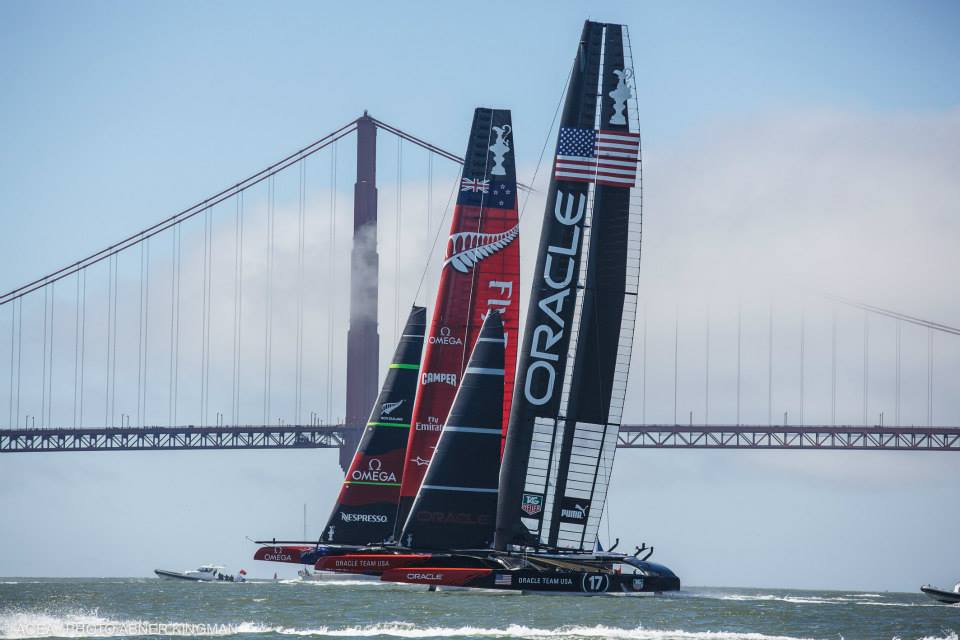
AC34 Photo
**Throughout the agony of the slow-motion train-wreck that was the lead-up to the 34th America’s Cup **(has there ever been a more tragic and carbon-splintered development phase, or a Louis Vuitton series that was less suspenseful or interesting?), there was always one dim hope: that the actual America’s Cup match, which is to say the one match race contest that really matters, would feature two boats and crews that were very close in speed and skill. And that they would deliver an epic battle for AC72 supremacy.
Happily, that dim hope has become a reality, so we are seeing the best racing AC72s can produce: interesting starts, lead changes, tactical suspense, and very few races that are over before the last leg (though the final rounding mark might as well be the finish). Whether Oracle Team USA pulls off a miraculous comeback against all odds, or Emirates Team New Zealand finally closes it out and lets the nation of New Zealand go back to work, I think I am ready to draw some conclusions about the America’s Cup tech-fantasy that Larry Ellison brought to life.
THE GOOD
A Different Tactical Game: I got this one wrong. I lamented the fact that catamarans would eliminate the intense, boat-on-boat, tactical appeal of monohull racing. And it did. But what I didn’t fully anticipate is that foiling catamarans would simply create a new and different tactical game. And it’s interesting, too! Yes, the traditional pre-start dial-up, and the intense dance for advantage once the start gun fires is gone. But there is a new kind of pre-start suspense. Will the pushing boat get a hook? Will the leading boat successfully fend off the hook before running out of race track? How deep below the layline can the boats go? Will the teams pull the trigger at the right time (a second early or a second late can be the difference between leading at Mark 1 or trailing)? Time and distance, as well as being able to accelerate (and get up on foils) have never been so critical.
Beyond that, it’s all so new that there is no set playbook. You can try and think through what you would do differently in the pre-start, and sometimes the teams try exactly what you have in mind. New rules may kill an old game, but they also bring a new game. And that is always refreshing.
Out on the racecourse it’s the same. Throw out (most of) the old tactical handbook. Downwind is not really downwind because the breeze you will be in is ahead of the boats. Tacks are very costly so a new balance between covering, or playing shifts, and being patient has to be found. It’s been fascinating to watch (and hear) Ben Ainslie and Ray Davies choose between allowing separation or sticking with more traditional match-racing tactics. Sometimes they prove wrong, and sometimes they prove brilliant. And the results can be brutal.
Few Leads Are Safe: The potential speed differentials are so great that sailing into a hole, dropping off the foils, or stumbling in a tack or gybe can restart a race in an instant. In Races 14 and 15, Emirates Team New Zealand twice erased large leads (only to give them back). Passes happen, and 400-meter leads evaporate. With two close boats, it’s never really safe to turn away or turn a race off, which is unusual in America’s Cup racing. Plus, if the wind is up there is always the possibility of a catastrophic boathandling error (of the sort which almost capsized ETNZ on Sept. 14).
Quick Races: There’s no reason a sailboat race needs to last two hours, especially if it’s not a close race. Trying to pack all the action into 40 minutes was a brilliant, and long overdue, innovation which was only made possible by the fact that the boats go so fast and cover so much water in that time. At 30 to 40 knots you can squeeze a lot of legs, and a lot of racing, into 40 minutes. In a monohull you might just be on the second leg in that time.
LiveLine Graphics: Graphics technology. It’s out there in the NFL and in other sports, so why not use it? Knowing who is ahead and by how far at any given moment, and seeing leads grow and shrink gives you new insight into what is happening on the racetrack (a place where camera angles can make a horizon job look close). This could be one of Ellison’s most lasting contributions to America’s Cup racing.
Telemetry: On top of LiveLine, throw in good audio and video feeds from the boats, mix in a little Ken Read commentary, and you are really cooking.
The Venue: Sailboats need wind. Television needs predictable wind. There is perhaps no place on earth that matches San Francisco’s ability to deliver, on schedule, a pumping breeze. Sure, not every day. But even baseball games get rained out. Having a reliable sea breeze, that arrives on schedule most days, is now a requirement for decent America’s Cup racing. And I am already imagining how much that will be missed if the Cup leaves San Francisco behind (plus, where else will you get such beautiful backdrops and crazy current effects?).
THE BAD:
Light Wind: We got one day of it, and it wasn’t very good racing. Related to “The Venue,” above: How would this sort of racing fare in a place that doesn’t reliably deliver 15-plus knots, which is to say just about every other place in the world? Foiling AC72 racing could, in fact, be a one-venue sport.
Less Boat vs. Boat: Maybe tacks are too costly (and exhausting)? Maybe the price of a collision is too high? This style of America’s Cup racing doesn’t have as much bare-knuckled, on-the-course aggression, with repeated bouncing, slam-dunks, or hard luffing, as the old version. It creates suspense and drama in other ways. But a little boat on boat brawling was always fun to watch.
Port Entry Too Advantaged: Especially in a breeze, and with a flood, the boat entering the start box on port had the upper hand. Played right, port entry pretty much meant a lead at Mark 1. That’s not good. Maybe the RC should skew the start more, so that the windward end of the line is that much closer to Mark 1. Being able to win the sprint to Mark 1 from either end of the start would make the starts even more intense.
The Venue: My only beef with the San Francisco City Front course is it is just a touch too confined. In most circumstances it is good to keep the boats coming back at each other. But sometimes the racing would be better if a trailing team could get more separation, and open up a passing lane. Unfortunately, Alcatraz Island can’t be shifted a quarter, or even an eighth, of a mile to the north.
10-Second Start Gap: I wouldn’t want to see a collision between two sailboats closing at a speed of 100 mph, but completely negating the ability of the starboard-entry boat to get to the port-entry boat is boring. How about staggering the start by 5 seconds instead? That will give the port entry boat a cushion, and time to react to the starboard boat, but any mistake will open up some options for the starboard boat. Yes, that means there is the possibility of collision. But these are the best sailors in the world. They can handle that risk.
THE UGLY:
Wind Limits: Ugh. Can we all just agree that the one thing you never want anyone to see or say with regard to America’s Cup racing is: “Racing has been cancelled because it is too windy”?
Time Limits: This one is more legitimate. But when you cancel a pretty decent race after 40 minutes perhaps it is time to reset the time limit to 60 minutes.
Cost: You can’t have a good America’s Cup competition without competing teams. And if the cost of a campaign is so prohibitive that it can only be afforded by three billionaires and an entire island nation, then things are a tad out of hand, even for the America’s Cup.
Wherever the Cup ends up next, will there be a way to downsize the costs of hard-wing, foiling catamaran racing enough to bring in lots of competing teams (but still deliver boats that are more awe-inspiring than an AC45)? If you produced a Cup that retained a lot of the thrill of the foiling AC72, pulled in 10 to 12 competing teams, and delivered close racing, you would really put on a show that the world might watch.

